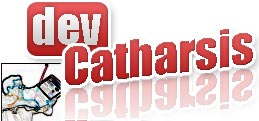[By default] The MVC Framework doesn't support classic postbacks and viewstate and doesn't consider any URL as the endpoint to a physical server file to parse and compile to a class. In ASP.NET, you have a 1:1 correspondence between a URL and a resource.
He goes on:
In the MVC Framework, a URL is seen as the mean to address a logical server resource, but not necessarily an ASPX file to parse. So the URLs employed by the pages of an MVC Framework application have a custom format that the application itself mandates. In the end, the MVC Framework employs a centralized HTTP handler that recognizes an application-specific syntax for links. In addition, each addressable resource exposes a well-known set of operations and a uniform interface for executing operations.
Dino ends up defining REST, an architectural style that MVC fully supports:
REST is an architectural pattern that defines how network resources should be defined and addressed in order to gain shorter response times, clear separation of concerns between the front-end and back-end of a networked system. REST is based on three following principles:
- An application expresses its state and implements its functionality by acting on logical resources
- Each resource is addressed using a specific URL syntax
- All addressable resources feature a contracted set of operations

No comments:
Post a Comment